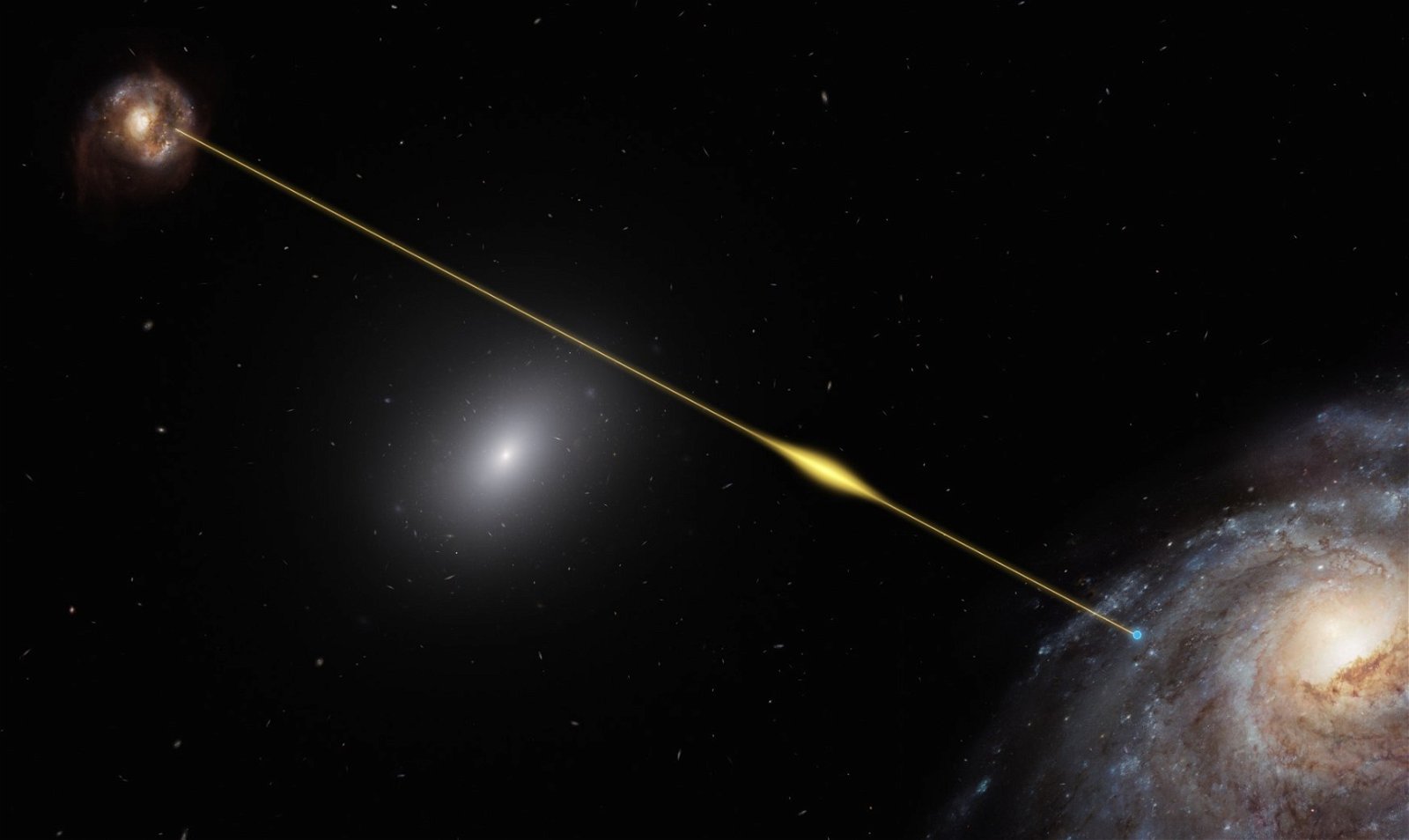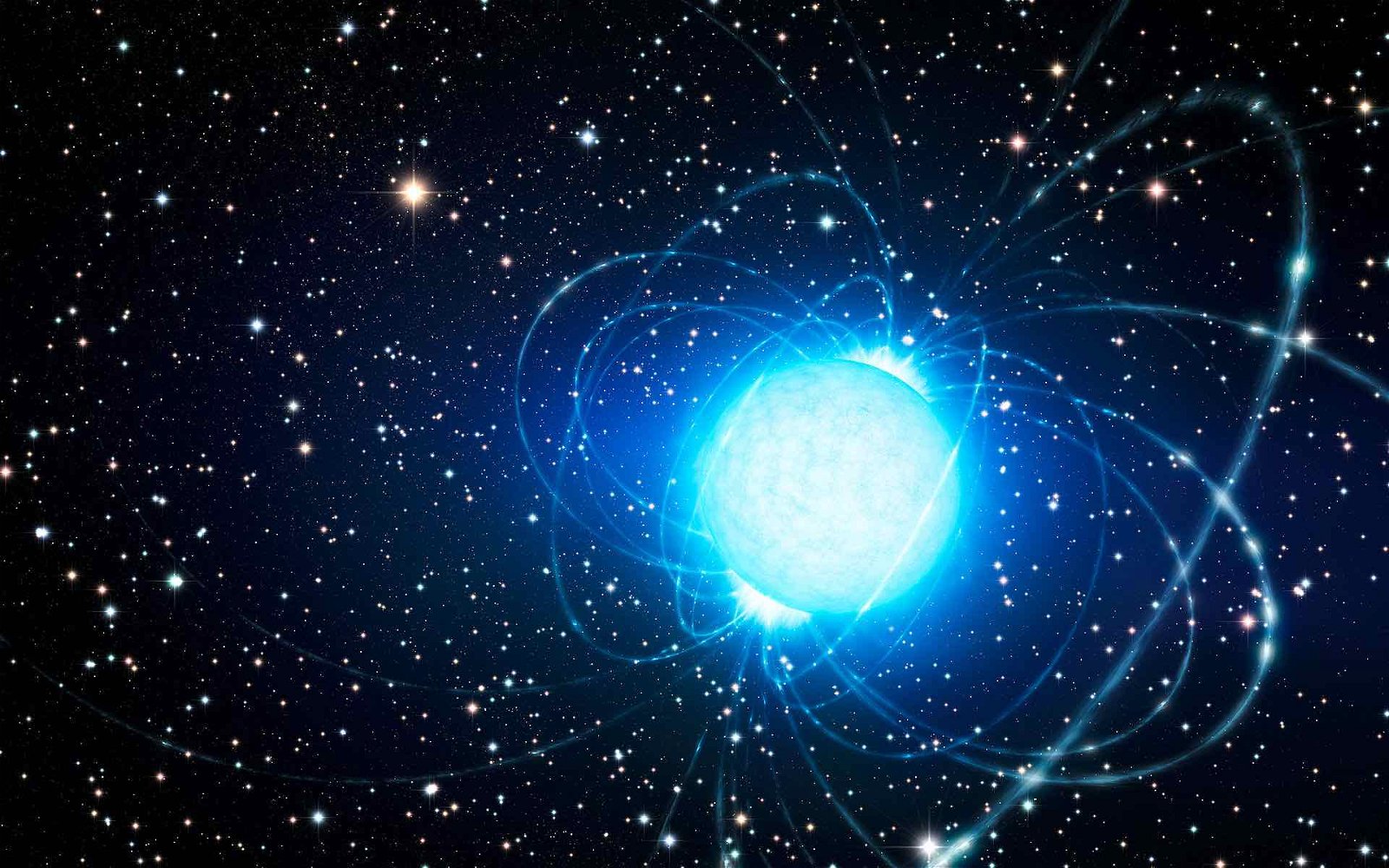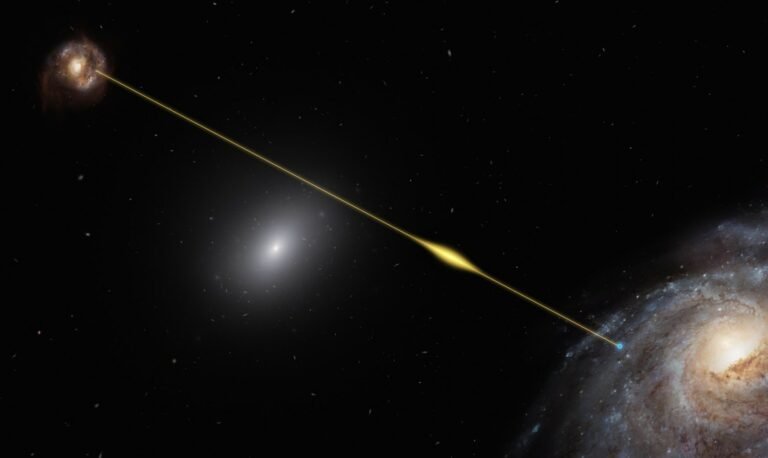

Welcome to this week’s installment of The Intelligence Brief… this week, we look at how an international team of researchers might have made a discovery that could help shed light on an enduring cosmic mystery: fast radio bursts. Our analysis will include 1) why fast radio bursts remain so unusual to astronomers, 2) whether they might have been linked with another cosmic mystery, 3) how the research team in question learned of the possible connection, and 4) the personal battle the 24-year-old lead researcher of the study endured during the discovery process.
Quote of the Week
“The intergalactic medium is difficult to probe, which is why fast radio bursts are exciting.”
– Shami Chatterjee, Ph.D.
Latest Stories: Before we get into our analysis this week, a few stories we’ve covered recently at The Debrief include a new paper from the University of Tokyo that suggests astrobiologists could find signs of alien life in particles of space dust ejected from distant exoplanets. Also, could Earth be at greater risk from a deadly asteroid impact than we may realize? As always, a listing of all our recent stories can be found at the end of this newsletter.
Podcasts: In podcasts from The Debrief, this week Stephanie Gerk and MJ Banias explore the DARPA Liberty Lifter, a particle accelerator breakthrough, and how researchers are trying to control light in the latest installment of The Debrief Weekly Report. Elsewhere, I recently gave a breakdown of a possible future artificial intelligence takeover scenario on The Micah Hanks Program. You can subscribe to all of The Debrief’s podcasts, including audio editions of Rebelliously Curious, by heading over to our Podcasts Page.
Video News: In the latest installment of Rebelliously Curious, Chrissy Newton is joined by Bryan Bender, a former POLITICO award-winning National Security Reporter and Editor turned Strategic Communications Advisor to discuss the process of news dissemination and how he was first seeded the 2017 New York Times breaking UAP news. You can also watch past episodes and other great content from The Debrief on our official YouTube Channel.
And with that all behind us, we now shift our attention toward a discovery made by an international team that could help astronomers unravel the mystery behind one of the greatest modern mysteries of the cosmos.
The Enduring Mystery of Fast Radio Bursts
Fast radio bursts (FRBs) remain one of the greatest modern space mysteries, the source of which remains a point of contention among astronomers. Ideas about their origins that have been proposed range from high-energy bursts emitted by distant pulsars to asteroids orbiting neutron stars, and even possible evidence of attempts at communication by extraterrestrial intelligence.
According to NASA, “these extraordinary events generate as much energy in a thousandth of a second as the Sun does in a year.” Due to the fact that they occur so quickly, “researchers have had a hard time tracking down where they come from, much less determining what kind of object or objects is causing them.”
However, an international team of researchers now says that they may have discovered something new about these enigmatic high-energy blasts that could help scientists determine more about their nature: that FRBs may be linked to another mysterious phenomenon in our cosmos.
The implications of the team’s discovery are only part of what makes this story so significant. Equally impressive is how the 24-year-old lead researcher of the study was able to overcome life-threatening health difficulties while the potentially groundbreaking research was being undertaken.
A Link Between Two Cosmic Mysteries?
According to the scientists behind a study recently appearing in the journal Nature Astronomy on March 27, a possible correlation may have now been detected between FRBs and a neutron star merger.
“An association like this one is not completely unexpected,” said UNLV astrophysicist Bing Zhang, a coauthor of the recent study who was among the first to propose such a connection almost a decade ago.
Zhang and the team report that following a recent observation of a deep space stellar collision, approximately 2.5 hours later, an FRB was also logged. Although the team still awaits confirmation of the cosmic combination, although if it is confirmed, they hope it may reveal more about the mysteries behind FRBs and what produces them.


In past studies, it was determined that at least some FRBs are believed to be produced by magnetars, highly magnetized varieties of neutron stars. However, there are also FRBs that astronomers categorize as one-off bursts which, although less easily accounted for, may still have similar origins. According to the team’s paper, that origin could be a result of gravitational waves that are produced when a neutron star merger occurs.
“One possibility is that the merger of neutron stars leaves behind a rapidly spinning massive neutron star rather than a black hole,” Zhang said in a press release. “The neutron star eventually collapses to a black hole after it spins down, ejecting its magnetosphere to create the FRB.”
The Gravitational Wave Connection
The event the team describes in their paper involves an incident that occurred in late April 2019, during observations of a neutron star merger called GW190425. It was only the second such event detected by gravitational wave detectors the likes of the Laser Interferometer Gravitational-Wave Observatory (LIGO) in the U.S., which has operated since 2015.
The secondary event involving the detection of the FRB in question, FRB 20190425A, came courtesy of the Canadian Hydrogen Intensity Mapping Experiment (CHIME) approximately 2.5 hours after the gravitational wave was registered.
Although such a connection had been speculated about beforehand, the discovery of the possible connection between these events resulted from work by a pair of University of Western Australia researchers, 24-year-old Alexandra Moroianu, a graduate student and lead author of the new paper, along with professor Linqing Wen, and professor Clancy James of Curtin University.
Moroianu says the discovery, if confirmed, “would certainly help unravel some of the mystery surrounding these fast radio bursts,” which might include why there are different properties exhibited by the various kinds of FRBs.
A Significant Discovery and a Personal Triumph
Incredibly, Moroianu managed to lead the research effort through the onset of an illness that ultimately led to heart failure and required an emergency transplant. According to a University of Western Australia news release, Moroianu submitted the final research paper while hospitalized in early 2022.
“It was definitely a difficult time, but it made me stronger in the end,” Moroianu said.


Despite the health issues she endured throughout the process, the results of Moroianu and the team’s work have been hailed by some as a “smoking gun” in the ongoing search for clues to the mystery of FRBs.
Professor James, the project’s co-supervisor, along with Linquing Wen, called Moroianu and her team’s findings “incredibly significant.”
Although the correlation between the two events requires additional confirmation, the team believes that the implementation of new gravitational wave detectors in the years ahead will provide additional data that may help researchers find similar pairings of events like the ones discovered by Moroianu and the team, which ultimately could help unravel the longstanding fast radio burst mystery.
But for now, that concludes this week’s installment of The Intelligence Brief. You can read past editions of The Intelligence Brief at our website, or if you found this installment online, don’t forget to subscribe and get future email editions from us here.


Here are the top stories we’re covering right now…
- Extrasolar Space Dust Could Contain Signs of Alien Life, New Paper Suggests
A new paper from the University of Tokyo suggests that astrobiologists could find signs of alien life in particles of space dust that have been ejected from exoplanets and traveled across the vastness of space to reach earth.
- Could Earth be at Greater Risk from a Deadly Asteroid Impact Than We Realize?
Recent studies indicate that potential threats related to an asteroid impact could be greater than previously realized.
- HyperCycle is on the Threshold of Enabling a New Route Towards Artificial General Intelligence
A new company called HyperCycle is enabling the development of global artificial intelligence by allowing localized AI systems to communicate and compete in an entirely new way.
- A Space Enigma: Rare Celestial Object Defies Simple Classification, Resembles Three Distinct Phenomena
Like a celestial jack of all trades, Z 229-15 is many things all at once: an active galactic nucleus, a quasar and, a Seyfert galaxy.
- This Little Quantum Light of Mine This week on The Debrief Weekly Report…The DARPA Liberty Lifter, A Particle Accelerator Breakthrough, and Controlling the Chaos of Light
Join Stephanie Gerk and MJ Banias this week as they discuss the latest news from The Debrief, including whether DARPA can make a giant double-decker airplane.
- Mysterious South Atlantic Anomaly is “Deepening,” Recent Government Report Says
An anomalous magnetic region in the South Atlantic Ocean is growing, according to data that appeared in a government report published earlier this year.
- The U.S. Air Force and DARPA Successfully Fly Lockheed Martin’s Hypersonic HAWC Scramjet
As a final phase of its HAWC hypersonic missile program, the Defense Advanced Research Projects Agency
- Sandstorms on an Alien World Are Revealed in New Data Collected by the James Webb Space Telescope
The James Webb Space Telescope (JWST) has revealed swirling sandstorms in the atmosphere of a planet 40 light-years away from Earth.
- Bard is Born: Introducing Google’s Newest High-Performance Chatbot
This week we look at Google’s announcement that it will soon begin opening access to Bard, its newest and most advanced chatbot.
- Law Enforcement Encounters with UAP
This week, we examine law enforcement encounters with UAP and their significance to the history of the phenomenon on The Micah Hanks Program.

